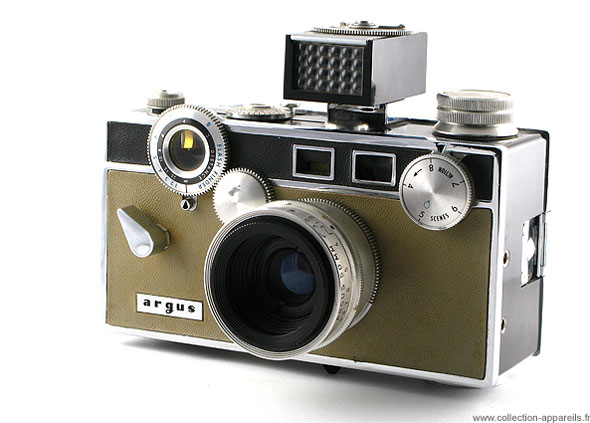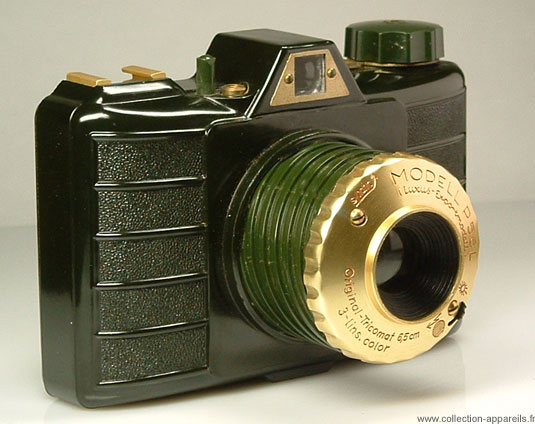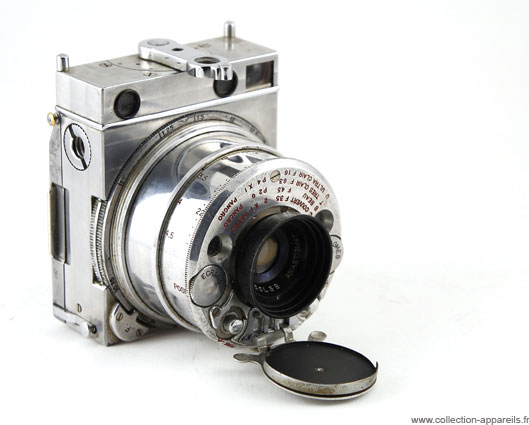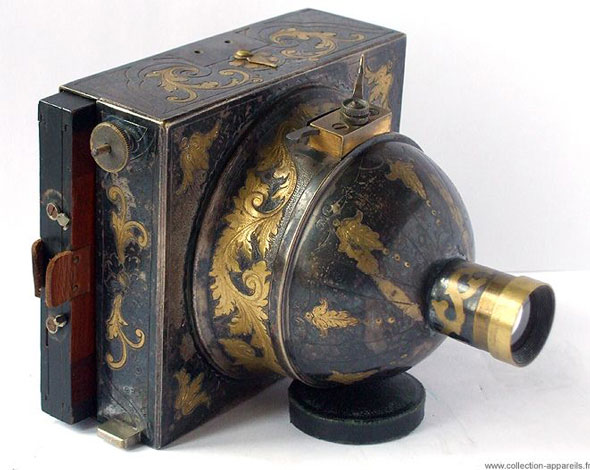God bless the French. This is probably the most extensive, most beautiful and most bizarre collection of cameras you’ll ever lay eyes upon. It’s impossible to find your own favorites from the Collection Appareils, an online vault of the most amazing cameras assembled by a French guy named Sylvain Halgand. It’s an astonishing encyclopedic collection of more than 10,000 vintage cameras from makers Ace to Zion (check out the vintage logos), dating back to the days when photography was invented.
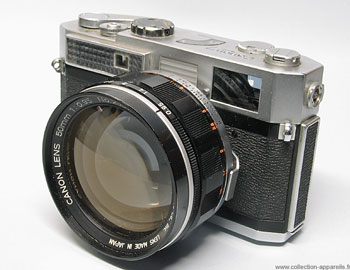
Just look how they designed cameras in the past. For instance, enjoy a stunning compact sexy Canon 7 with Leica screw mount (!) and an amazingly bright 50mm F0.95… The variety of gear photographers enjoyed in the past is not less flabbergasting than today, but completely different. One could be tempted to say we’re living in a dire age of camera design. Today it’s all about sensor size, mirrorless or not, viewfinder or not, while in the end they all look kind of the same. Back in those days though when gear was manufactured by hand and not machines, creative design abounded.
The archive is carefully photographed and catalogued by Monsieur Halgand. It’s not clear how many of the camera he owns himself. We don’t learn anything about Sylvain Halgand, except that he has a fetish for truly beautiful, vintage camera gear. Take the site’s home screen, a meticulous interactive mosaic of a dizzying array of the most eclectic camera models ever produced. And you think the past was boring? Look how boring our cameras look today…
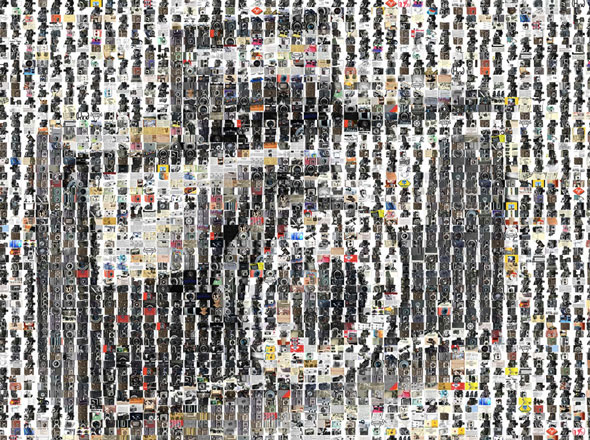
Today we enjoy a multitude of camera functions and stuff, but the big boys even name their models similarly… Back then all functionality available was shutter speed, aperture and, sometimes, sensitivity. The “lack” of functions though inspired design to an extent that today’s camera designers rather look like copycat machinists. A camera back then was more fashion statement and luxury accessory, more individual, less mass product.
Some of the French gallery’s entries only include a name and a picture, while others are accompanied by interesting facts. For example, the Irwin Lark (the “sardine can”) was oozing oil when Halgand received it because of an overly lubricated shutter… Disclaimer though, proceed to Collection Appareils with caution, you’ll want to have hours to kill. To my surprise, thanks to Monsieur Halgand, I learned that Apple actually once made a camera, the Quicktake…
(via Messy Nessy Chic)

